Archive for January, 2013
January 27th, 2013 by dave dorsey

One of Jeffrey Melzack’s watercolors
I stopped into Viridian Artists last week to pick up a painting I’d shown in Endings and Beginnings, because I needed to ship it to Manifest for their current exhibit. With the parking maneuvers of an unlicensed limo driver, risking big parking tickets at rush hour, I got the job done, I’m proud to report. I’m getting as bold and improvisational as a seasoned New York driver, though I’m only an interloper in this town. I parked illegally at Second Avenue and 51st St., in the bus lane, and on a crosswalk. (You would think I was kind of a big deal.) I sprinted into UPS, plopped my big, pre-labeled pre-paid shipment onto the counter, and rushed back out to the car before anyone would have time to ticket or tow me. Gotta love those emergency blinkers. Before all of these urban scofflaw antics, I had time to catch up with Vernita N’Cognita and Lauren Purje, who were both on duty at the gallery desk. I lingered quite a while taking some iPhone shots of the current Viridian affiliate show, Disconnected Realities, getting in everybody’s way and in general feeling like an uninvited guest. It gave me time to warm up to the way the whole show looked. It seemed to hang together more coherently than most of the group shows we’ve had at the gallery over the past year, including ones I’ve been in. There was a lot of work on the walls, but it was hung in tight clusters of individual style that gave me a pretty clear sense of each artist’s strengths. It helped that most of the work was fairly small. A few quick impressions:
What I noticed about the photographs by William Atkins was how they captured contemporary sitters with techniques that give the MORE
January 24th, 2013 by dave dorsey
. . . who died a few days ago.
Musee Des Beaux Arts
About suffering they were never wrong,
The old Masters: how well they understood
Its human position: how it takes place
While someone else is eating or opening a window or just walking dully along;
How, when the aged are reverently, passionately waiting
For the miraculous birth, there always must be
Children who did not specially want it to happen, skating
On a pond at the edge of the wood:
They never forgot
That even the dreadful martyrdom must run its course
Anyhow in a corner, some untidy spot
Where the dogs go on with their doggy life and the torturer’s horse
Scratches its innocent behind on a tree.
In Breughel’s Icarus, for instance: how everything turns away
Quite leisurely from the disaster; the ploughman may
Have heard the splash, the forsaken cry,
But for him it was not an important failure; the sun shone
As it had to on the white legs disappearing into the green
Water, and the expensive delicate ship that must have seen
Something amazing, a boy falling out of the sky,
Had somewhere to get to and sailed calmly on.
–W.H. Auden
January 23rd, 2013 by dave dorsey
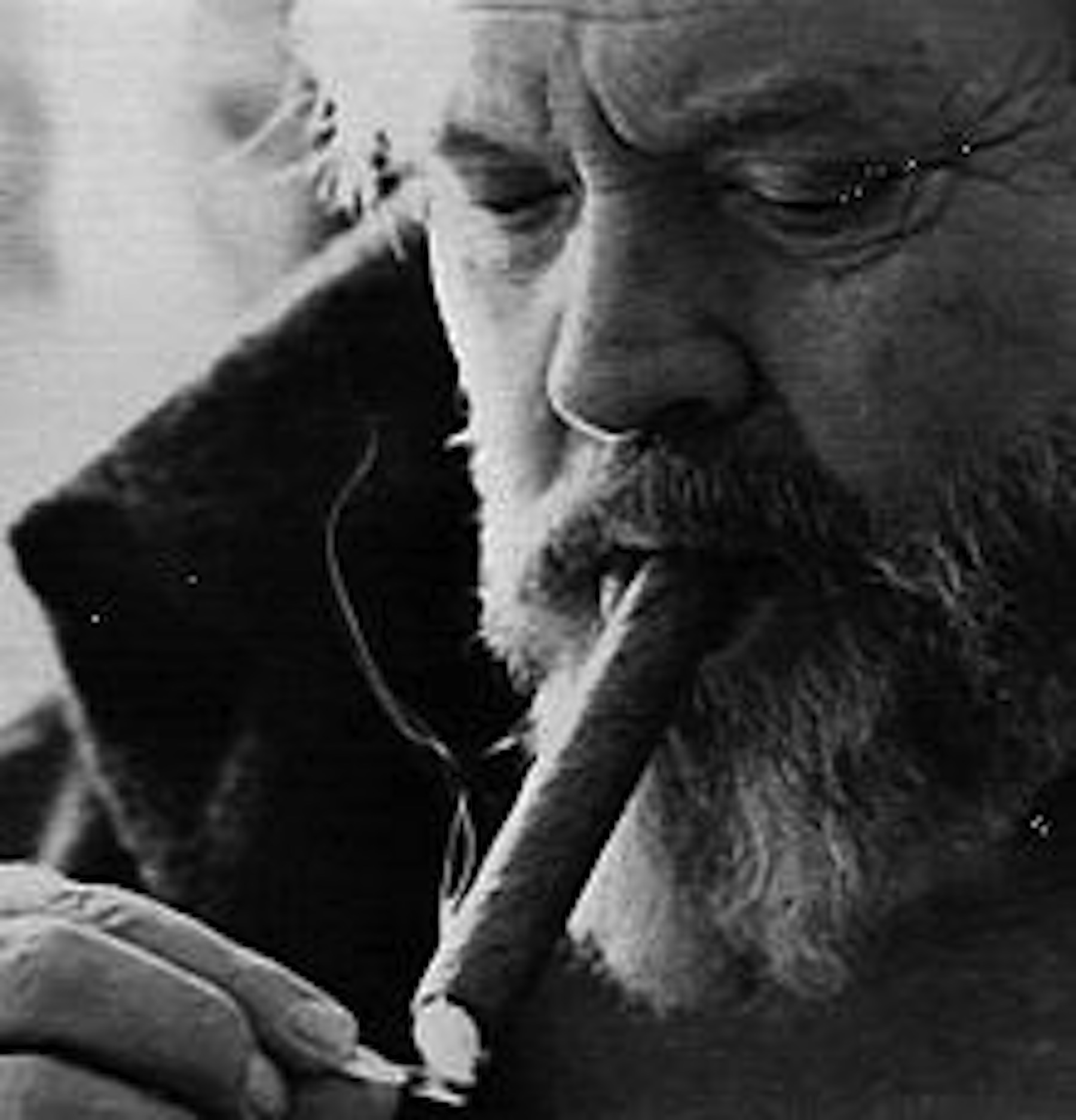
“The enemy of art is the absence of limitations.” – Orson Welles.
January 22nd, 2013 by dave dorsey
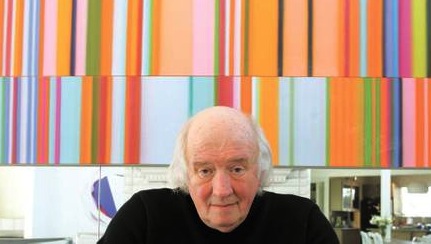
Taking a lesson from J.D. Salinger and Thomas Pynchon, Dave Hickeys says he’s retiring from his role as gadfly to the art world. He’s disgusted with the whole game, and he isn’t going to take it anymore. He’s going to quit writing about art. I’ll believe it when I see it. A museum director I’ve known for many years sent me one of the best recent pieces about him–the more you hide, the more they seek, if you’re famous. My friend sent me a link because he knows I’ve nourished myself on Hickey’s ideas since I discovered the man’s writing, belatedly, only about five years ago. (Two years ago, in Albuquerque, I walked up to Hickey himself and with dorky humility requested and got his autograph on the title page of my copy of The Invisible Dragon. Hickey was there to speak with Ed Ruscha at a symposium on fine art printing. He was kind and friendly and gracious but did not invite me to have a drink. Shocking! Ed Ruscha, sitting at the same table, bided his time and didn’t make eye contact even though I was attending with a friend of his.) The article I’ve just finished reading is by Laurie Fendrich, a professor of fine arts at Hofstra University. It’s a fine introduction to the man and his views. She lists his credentials, such as the MacArthur genius grant, his history as an art dealer, his editorship at Art in America, and his wild man bona fides, which unavoidably sounds like vicarious name checking when anyone gets down to listing his coolest acquaintances—Hunter S. Thompson and Lester Bangs, for example. (OK, now I realize I shook the hand of a man who was friends with Lester Bangs . . . ) But what she nails is Hickey’s central notion that “beauty” is the language of art. Ironically, French structuralism is his critical method of choice, yet he claims to practice a subtle kind of deconstruction distinct from the political cudgel postmodernism has become in American academia.
All in all, Hickey seems to be pretty busy writing for somebody who’s giving it up: coming out soon will be Hot Chicks (would it be named anything else?) on female artists, and Pagan America, to elaborate on his view that American life is, MORE
January 18th, 2013 by dave dorsey

Mangroves from my parents’s back door at dawn
First of all, there’s one central irony in all this. I hate crickets. When August arrives, they emerge and begin that creaky, rhythmic din that at first seems seasonal in a nice way and then quickly begins to sound like a monotonous dirge announcing the heat death of summer. Soon, they begin to ride into our house on cut flowers and then crawl into our cabinets and start chirping in a way that’s nearly impossible to locate. Somehow they’re able to send out waves of throbbing sound for hours at a time and it seems to come out of all the walls at once. If I do find them—they’re tiny—I’m unsparing. They either die or are caught and tossed outside. So that’s my official position, for most of the year, on crickets. You may be amused by this as you read on.
That said, I spent most of last week on Longboat Key, a barrier island off the coast of Sarasota, helping my parents settle into their home there for the next four months. My studio stayed in Pittsford, NY, of course, so I’ve been unable to paint for almost a month actually, with my income-generating work as a writer taking up most of my time, which will continue for another week or so. I flew to Florida with them and stayed for five days and passed most of the first three days doing nothing but handling random simmering emergencies: restoring cable service, which took nearly 24 hours off and on; two separate plumbing repair jobs; grocery shopping at the new Publix (it looks like three Whole Foods fused into one shiny new uber-market); turning on the water heater which had inexplicably been turned off; resetting passwords; rebooting anything rebootable; and a dozen other tasks that neither of my parents is young/healthy/Internet-friendly enough to do. MORE
January 15th, 2013 by dave dorsey
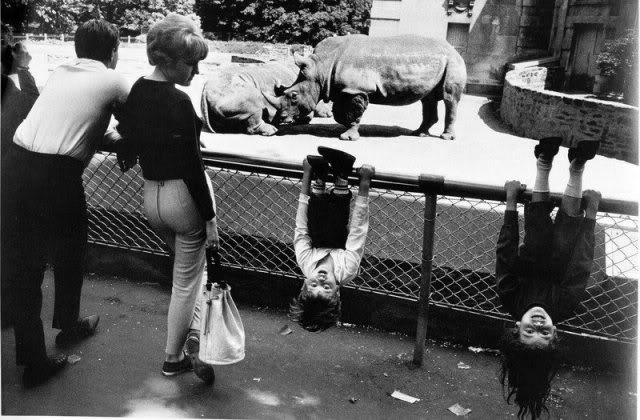
There’s a great article about photographer Garry Winogrand in the most recent Harper’s. (You have to subscribe to view it online.) It describes how, when he worked up a little steam, he would shoot his work continuously, exposing roll after roll of 400ASA film, sometimes taking shots as he drove around the city, obsessive, compulsive, in thrall to the shutter button. The speed of the film enabled him to do much of what he did, which feels to me like something a Beat generation writer would have done, as well as a body of work Walt Whitman could have fallen in love with. The endless series of shots, often left in undeveloped rolls, reminds me of Kerouac with his continuous scroll of paper running through the typewriter, typing furiously and never looking back. His methods, shooting as a knee-jerk response to nearly everything he looked at, has an indiscriminate Zen-like spontaneity, a ceaseless flow of shooting as a fertile shadow of seeing itself. Almost as if Winogrand was simply trying to leave behind a lesson in mindfulness. As if he wanted to achieve that pinnacle of attention that Eliot attributed to James: the ideal of having a mind on which nothing was lost. His voracious impulse to record the world also reminds me of the polymorphous appetite familiar in Whitman and Ginsburg both for celebrating just about everything that is. OK, so I guess I’ve gone and turned him into a writer. He was just the opposite. There’s always a subject, but rarely a story, in his work. As always, go see for yourself on Google image.
Here are some quotes from Garry Winogrand. Replace “photograph” with “painting” and these comments have just as much significance, more often than not. These are wonderfully written, but his pictures don’t need words. They’re all about the visual and totally “against interpretation.” Sontag would have loved the guy:
- “Photos have no narrative content. They only describe light on surface.”
- “Great photography is always on the edge of failure.”
- “Every photograph is a battle of form versus content.”
- “I photograph to see what the world looks like in photographs.”
- “I like to think of photographing as a two-way act of respect. Respect for the medium, by letting it do what it does best, describe. And respect for the subject, by describing as it is. A photograph must be responsible to both.”
- “I don’t have anything to say in any picture. My only interest in photography is to see what something looks like as a photograph. I have no preconceptions.”
- “There is no special way a photograph should look.”
January 14th, 2013 by dave dorsey
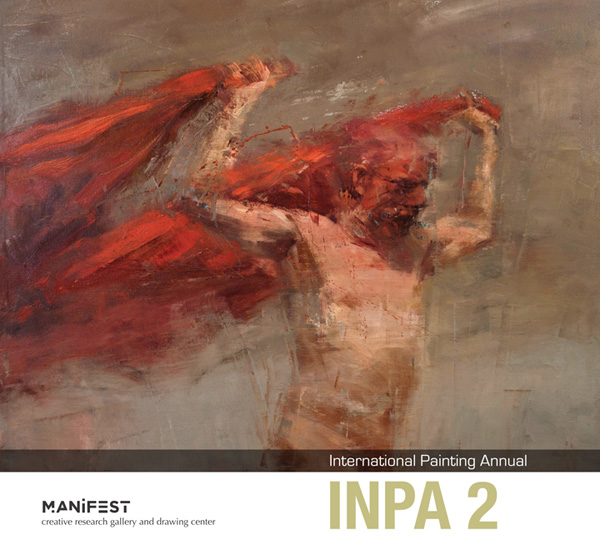
Just sent this off to Jason Franz and crew in Cincinnati. I know it’s a little suspect to praise a gallery for showing high-quality work when you’re own stuff is in the mix. But they’re doing more than just picking good work, and they do it in their own unique way. As I’ve said before, I wish they’d clone themselves as Manifest franchises in a lot of other cities. Even if I keep saying that, I’m sure it won’t happen.
I loved INPA 2, both as a writer and a painter. You included samples of both my writing and my painting, so this edition of the book serves as a validating way for me to introduce people what I’m doing in both areas. Your publications work the way your exhibitions do. They give artists an opportunity to have their work shown alongside some of the best art being made nationally and internationally–without any reference to whether or not it sells or hews to any particular trend or critical school. The fact that the work you select for everything you do is usually less than ten percent of what’s submitted for possible inclusion–and also that your selections are based on the review of a committee rather than one or two jurors–authenticates the Manifest “brand” in a way that’s hard to find in other juried shows open to nearly anyone who makes art. I’m always pleased when I’m able to participate in anything Manifest puts together because its an honor to be selected from among a pool of such worthy art. Your shows and publications strike me as a rare way for people to find work that’s excellent but possibly overlooked by the usual gatekeepers: academia, museums, commercial galleries, commercial art publications, and the mainstream market in general. I also have the sense that Manifest cares about championing art that can communicate with the art world’s equivalent of what has been called, or at least used to be called, in the world of publishing, the “common reader.” The shows are always sophisticated, but they also seem to be driven by an ideal of reaching as large a public as possible–the common viewer if you will–rather than an elite group of initiates (insofar as it’s possible to do that with the way visual art has evolved in the past hundred years).
The INPA2 book itself is wonderfully made. The materials are the highest quality, as is the binding, the reproductions and color fidelity. Thanks once again for allowing me to participate.
January 9th, 2013 by dave dorsey

Little, endearing video from the New York Times about an artist who likes to design impossible boats, including paradoxical ones: it’ll float, but you have to keep fixing it continuously to keep it from sinking, for example. Water dice! I love learning about the French equivalent of Kickstarter: Kiss Kiss, Bank, Bank. So French. (They probably loved the Robert Downey/Val Kilmer movie.) The dice follow the path Columbus took on his way to the New World. The slaves arrived by the same route. He launched his dice from the Canary Islands, for the trade winds. The dice are currently in the Atlantic, heading toward the Caribbean.
January 5th, 2013 by dave dorsey
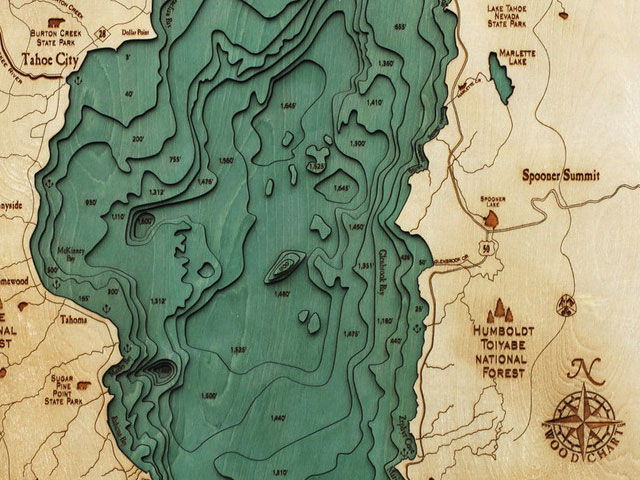
Relief map of Nevada lake
Love this little post from kottke.org. It applies to nearly all art I love, though it’s actually about, uh, some water maps. Like the one above. What’s under water is up above. I sound confused. (Maybe what they’ve been saying about me is true.)
Take this quote and insert name of favorite painting to replace the link in the middle:
There’s not much to say about this gorgeous, wooden, laser-cut bathymetric chart of various bodies of water except that just look at it!
I altered two words in that quote in a way that doesn’t matter. Trust me on that. If only all art criticism could be reduced to the sentence I’ve offered instructions in how to make, up above. Under my first paragraph . . . oh well.
January 3rd, 2013 by dave dorsey
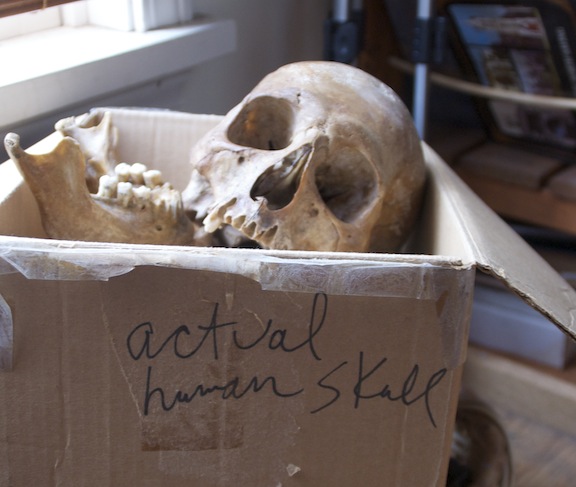
Find the right place in my studio for the human skull in my care. It’s been on loan to me from Chris and John Pulleyn for almost a year now. I finally did one painting of it last month, which is on exhibit at Viridian Artists right now. I’d like to do more. Thus, I’m dragging my feet about returning it, looking for just the right place for it to gaze across the studio at me as I work.
January 3rd, 2013 by dave dorsey

Find a better bookmark. And finish reading more books. I start plenty of them . . .
More to come after another hiatus.
January 3rd, 2013 by dave dorsey
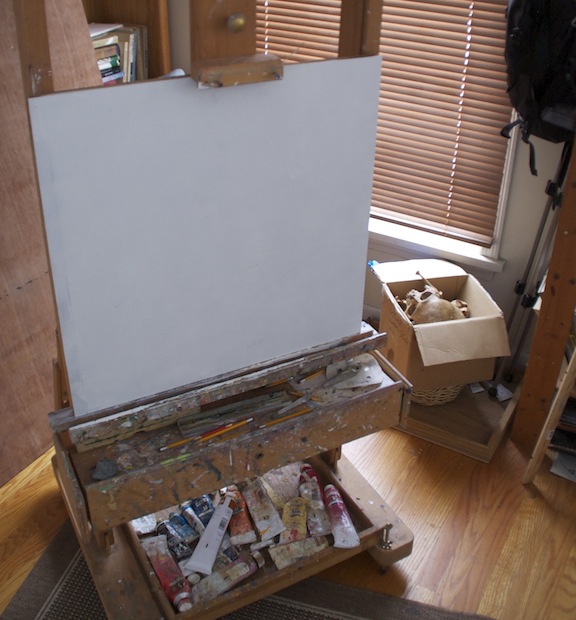
Start. A. New. Painting.
January 3rd, 2013 by dave dorsey
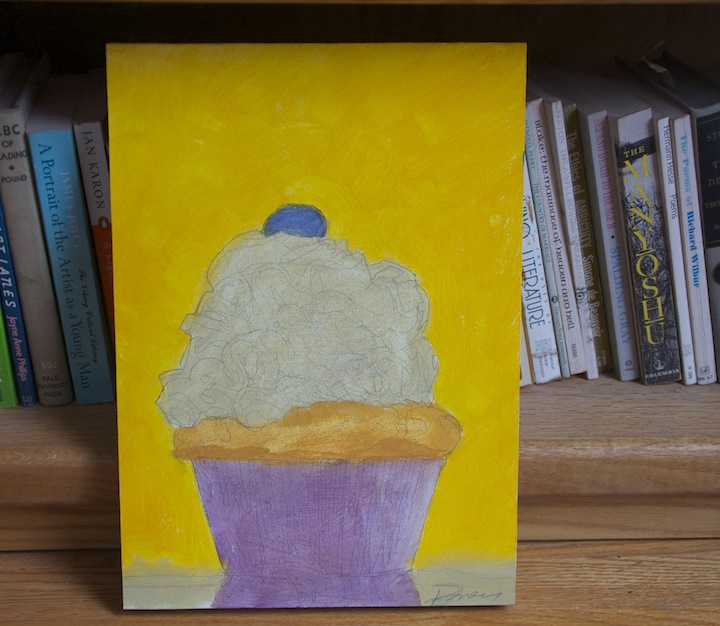
Finish painting this little meaningless cupcake. It’s been sitting like this for half a year, already signed (I sign paintings just as I start them not when they’re done, so the signature will fuse into the paint. And then I paint in thin coats on top of it. I’ve been trying and abandoning a lot of cupcakes, partly because, believe it or not, they inspire animosity. A good friend who takes herself very seriously said to me a few weeks ago, with regard to my cupcake paintings, “How can you sleep at night when you send junk like that out into the world?” (Those of you who know her will know exactly who I mean.) With that comment under my belt, I’m so dying to paint a fucking cupcake now. This one’s about a foot tall. I might even do one four feet tall and send that out into the world . . . maybe to one particular address . . .
January 3rd, 2013 by dave dorsey
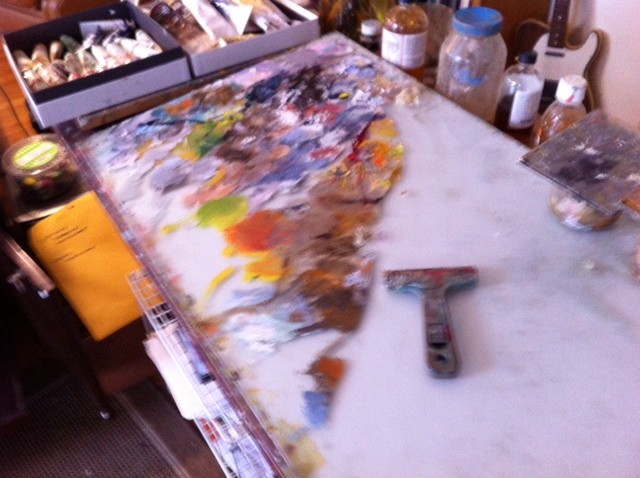
This might help: scrape the rest of the three-week-old paint off my glass palette. Also, long-term, learn how to play “Blackbird” on that Fender Telecaster sitting on the floor in the upper right-hand corner of the shot (45-year-old guitar, BTW, but all I’ve got anymore is a practice amp my son used for the brief period when he gave guitar lessons a try and then stuck to baseball). Or buy a good acoustic and see if I actually remember how to make a chord. It’s been a while.
January 3rd, 2013 by dave dorsey
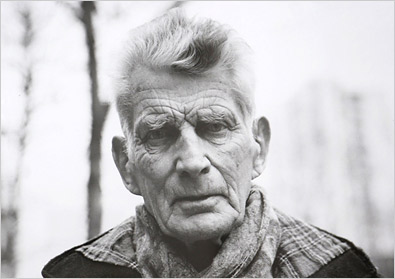
“I must go on. I can’t go on. I’ll go on.” That kind of commitment is my native element at this time of year. I’ve got half a dozen things that need doing every day, none of which have anything to do with painting or writing this blog. I’m hoping the half dozen will become merely three and I can get back to painting and writing about it.













